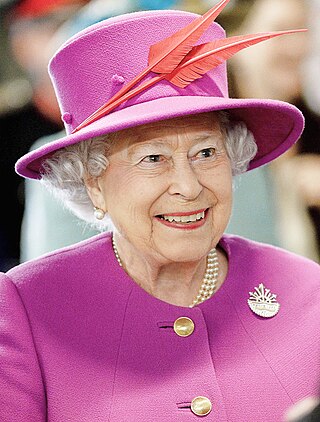List of monarchs
| Temple name | Portrait | Period of reign | Personal name | Reign name | Posthumous name |
|---|---|---|---|---|---|
| Taejo |  | 1392–1398 | Yi Seong-gye later Yi Dan 이성계 later 이단 | King Kangheon Jiin Gyewun Seongmun Shinmu the Great 강헌지인계운성문신무대왕 | |
| Jeongjong | 1398–1400 | Yi Bang-gwa later Yi Gyeong 이방과 later 이경 | King Gongjeong Euimun Jangmu Onin Sunhyo the Great 공정의문장무온인순효대왕 | ||
| Taejong | 1400–1418 | Yi Bang-won 이방원 | King Gongjeong Seongdeok Sin-gong Geoncheon Chegeuk Daejeong Gye-u Munmu Yecheol Seongnyeol Gwanghyo the Great 공정성덕신공건천체극대정계우문무예철성렬광효대왕 | ||
| Sejong | 1418–1450 | Yi Do 이도 | King Jangheon Yeongmun Yemu Inseong Myeonghyo the Great 장헌영문예무인성명효대왕 | ||
| Munjong | 1450–1452 | Yi Hyang 이향 | King Gongsun Heummyung Insuk Gwangmun Seonghyo the Great 공순흠명인숙광문성효대왕 | ||
| Danjong |  | 1452–1455 | Yi Hong-wi 이홍위 | King Gongeui Onmun Sunjeong Anjang Gyungsun Donhyo the Great 공의온문순정안장경순돈효대왕 | |
| Sejo |  | 1455–1468 | Yi Yu 이유 | King Hyejang Sungcheon Chedo Yeolmun Yeongmu Jideok Yunggong Seongsin Myeongye Heumsuk Inhyo the Great 혜장승천체도열문영무지덕융공성신명예흠숙인효대왕 | |
| Yejong | 1468–1469 | Yi Gwang 이광 | King Yangdo Heummun Seongmu Euiin Sohyo the Great 양도흠문성무의인소효대왕 | ||
| Seongjong | 1469–1494 | Yi Hyeol 이혈 | King Gangjeong Inmun Heonmu Heumseong Gonghyo the Great 강정인문헌무흠성공효대왕 | ||
| Yeonsangun | 1494–1506 | Yi Yung 이융 | King Heoncheon Hongdo Gyungmun Wimu the Great 헌천홍도경문위무대왕 | ||
| Jungjong | 1506–1544 | Yi Yeok 이역 | King Gonghee Hwimun Somu Heumin Seonghyo the Great 공희휘문소무흠인성효대왕 | ||
| Injong | 1544–1545 | Yi Ho 이호 | King Yeongjeong Heonmun Euimu Jangsuk Heumhyo the Great 영정헌문의무장숙흠효대왕 | ||
| Myeongjong | 1545–1567 | Yi Hwan 이환 | King Gongheon Heoneui Somun Gwangsuk Gyeonghyo the Great 공헌헌의소문광숙경효대왕 | ||
| Seonjo |  | 1567–1608 | Yi Yeon 이연 | King Sogyung Jeongryun Ripgeuk Seongdeok Hongryeol Jiseong Daeeui Gyeokcheon Heeun Gyungmyung Sinryeok Honggong Yungeop Hyeonmun Euimu Seongye Dalhyo the Great 소경정륜립극성덕홍렬지성대의격천희운경명신력홍공융업현문의무성예달효대왕 | |
| Gwanghaegun | 1608–1623 | Yi Hon 이혼 | King Checheon Heungun Jundeok Honggong Sinseong Yeongsuk Heummun Inmu Seoryun Ipgi Myungseong Gwangryeol Yungbong Hyeonbo mujeong Jungheui Yecheol Jangeui Jangheon Sunjeong Geoneui Sujeong Changdo Sungeop the Great 체천흥운준덕홍공신성영숙흠문인무서륜입기명성광렬융봉현보무정중희예철장의장헌순정건의수정창도숭업대왕 | ||
| Injo | 1623–1649 | Yi Jong 이종 | King Gaecheon Joun Jeonggi Seondeok Heonmun Yeolmu Myeongsuk Sunhyo the Great 개천조운정기선덕헌문열무명숙순효대왕 | ||
| Hyojong | 1649–1659 | Yi Ho 이호 | King Heumcheon Daldo Gwanggok Hongyeol Seonmun Jangmu Sinseong Hyeonin Myeongeui Jeongdeok the Great 흠천달도광곡홍열선문장무신성현인명의정덕대왕 | ||
| Hyeonjong | 1659–1674 | Yi Yeon 이연 | King Sohyu Yeongyung Dondeok Suseong Sunmun Sukmu Gyungin Changhyo the Great 소휴연경돈덕수성순문숙무경인창효대왕 | ||
| Sukjong |  | 1674–1720 | Yi Sun 이순 | King Hyeoneui Gwangyun Yeseong Yeongryeol Yumo Yeongun Hongin Jundeok Baecheon Habdo Gyehyu Dokgyung Jeongjung Hyeopgeuk Sineui Daehun Jangmun Heonmu Gyungmyung Wonhyo the Great 현의광윤예성영렬유모영운홍인준덕배천합도계휴독경정중협극신의대훈장문헌무경명원효대왕 | |
| Gyeongjong | 1720–1724 | Yi Yun 이윤 | King Gakgong Deokmun Ikmu Sunin Seonhyo the Great 각공덕문익무순인선효대왕 | ||
| Yeongjo |  | 1724–1776 | Yi Geum 이금 | King Jangsun Jihaeng Sundeok Yeongmo Uiryeol Jang-ui Hong-yun Gwang-in Donhui Checheon Geon-geuk Seonggong Sinhwa Daeseong Gwang-un Gaetae Giyeong Yomyeong Suncheol Geon-geon Gonyeong Baemyeong Sutong Gyeongnyeok Honghyu Junghwa Yungdo Sukjang Changhun Jeongmun Seonmu Huigyeong Hyeonhyo the Great 장순지행순덕영모의렬장의홍윤광인돈희체천건극성공신화대성광운개태기영요명순철건건곤영배명수통경력홍휴중화융도숙장창훈정문선무희경현효대왕 | |
| Jeongjo |  | 1776–1800 | Yi San 이산 | King Gyeongcheon Myeongdo Hongdeok Hyeonmo Munseong Muryeol Seongin Janghyo the Great 경천명도홍덕현모문성무렬성인장효대왕 | |
| Sunjo |  | 1800–1834 | Yi Gong 이공 | King Seongak Yeondeok Hyeondo Gyeongin Sunhui Cheseong Eungmyeong Heumgwang Seokgyeong Gyecheon Baegeuk Yungwon Donhyu Euihaeng Soyun Huihwa Junryeol Daejung Jijeong Honghun Cheolmo Geonsi Taehyeong Changun Honggi Gomyeong Bakhu Ganggeon Sujeong Gyetong Suryeok Gongyu Beommun Anmu Jeongryeong Gyeongseong-hyo the Great 선각연덕현도경인순희체성응명흠광석경계천배극융원돈휴의행소윤희화준렬대중지정홍훈철모건시태형창운홍기고명박후강건수정계통수력공유범문안무정령경성효대왕 | |
| Heonjong |  | 1834–1849 | Yi Hwan 이환 | King Jangsuk Chegeon Gyegeuk Jungjeong Gwangdae Jiseong Gwangdeok Hongun Janghwa Gyungmun Wimu Myeongin Cheolhyo the Great 장숙체건계극중정광대지성광덕홍운장화경문위무명인철효대왕 | |
| Cheoljong |  | 1849–1864 | Yi Byeon 이변 | King Huiyun Jeonggeuk Sudeok Sunseong Heummyung Gwangdo Donwon Changhwa Munhyeon Museong Heonin Yeonghyo the Great 희윤정극수덕순성흠명광도돈원창화문현무성헌인영효대왕 | |
| Gojong |  | 1864–1897 (1897–1907)2 | Yi Myeong-bok 이명복 | Gaeguk 개국 and Geonyang 건양 and Gwangmu 광무 | Emperor Tae 태황제 |





